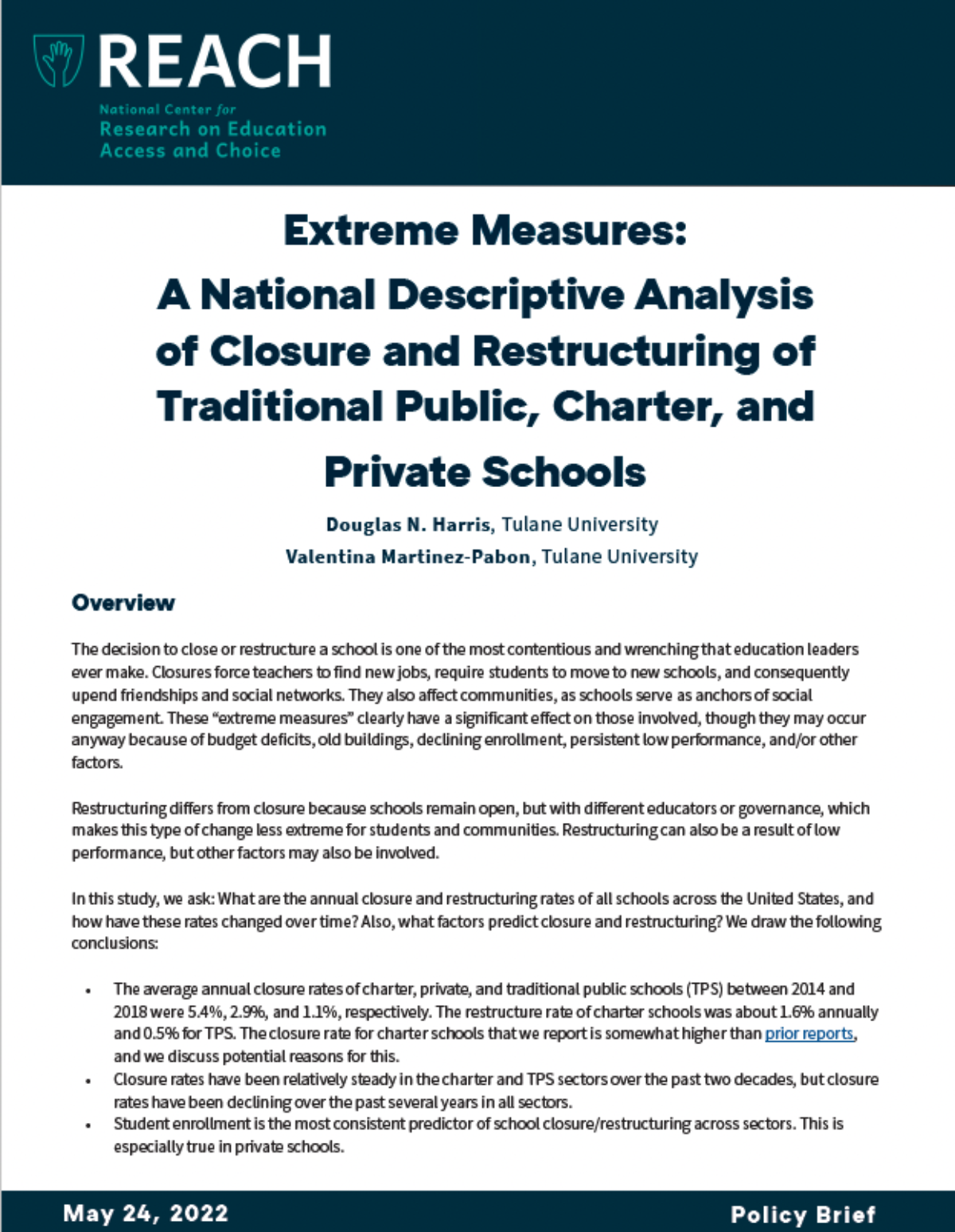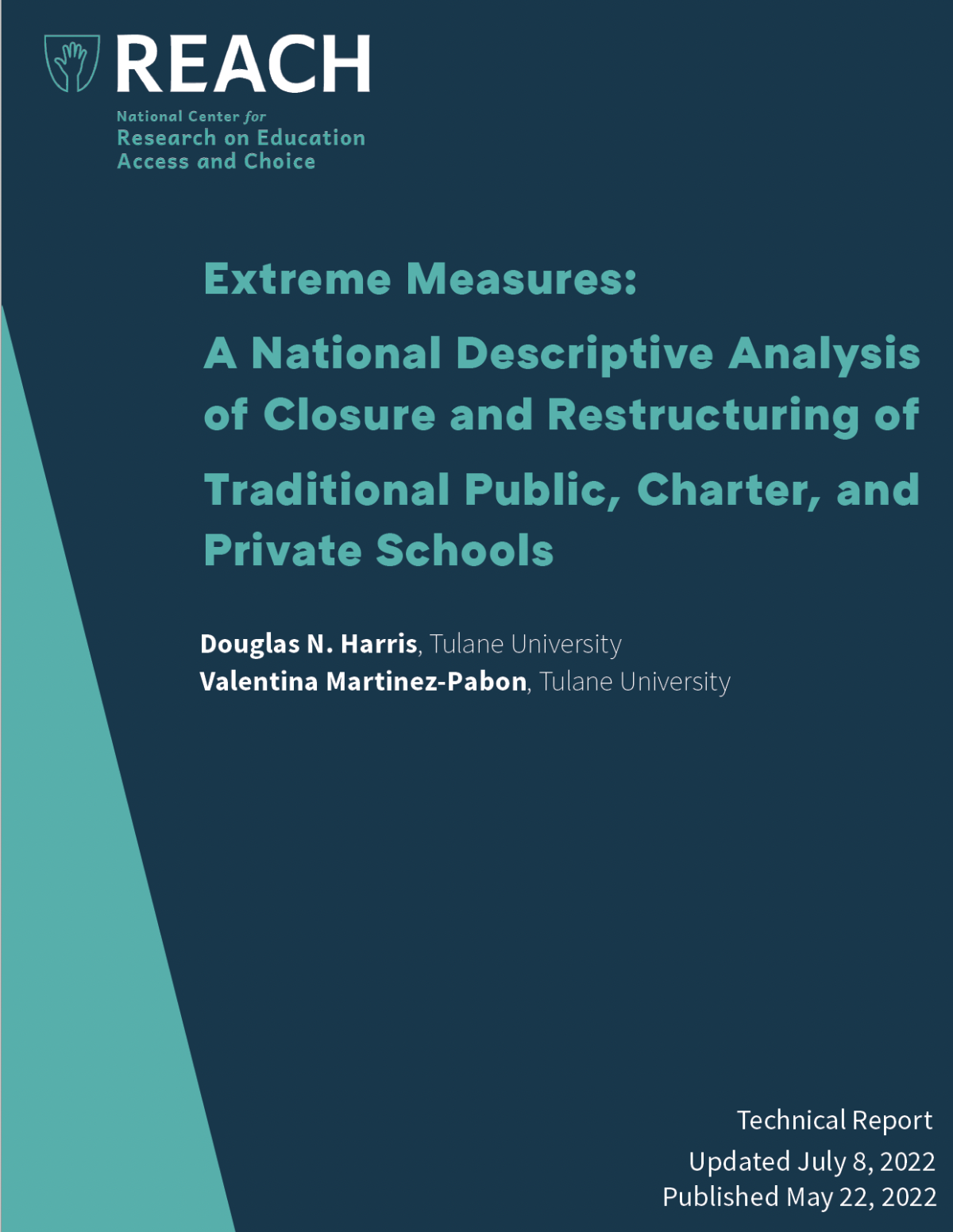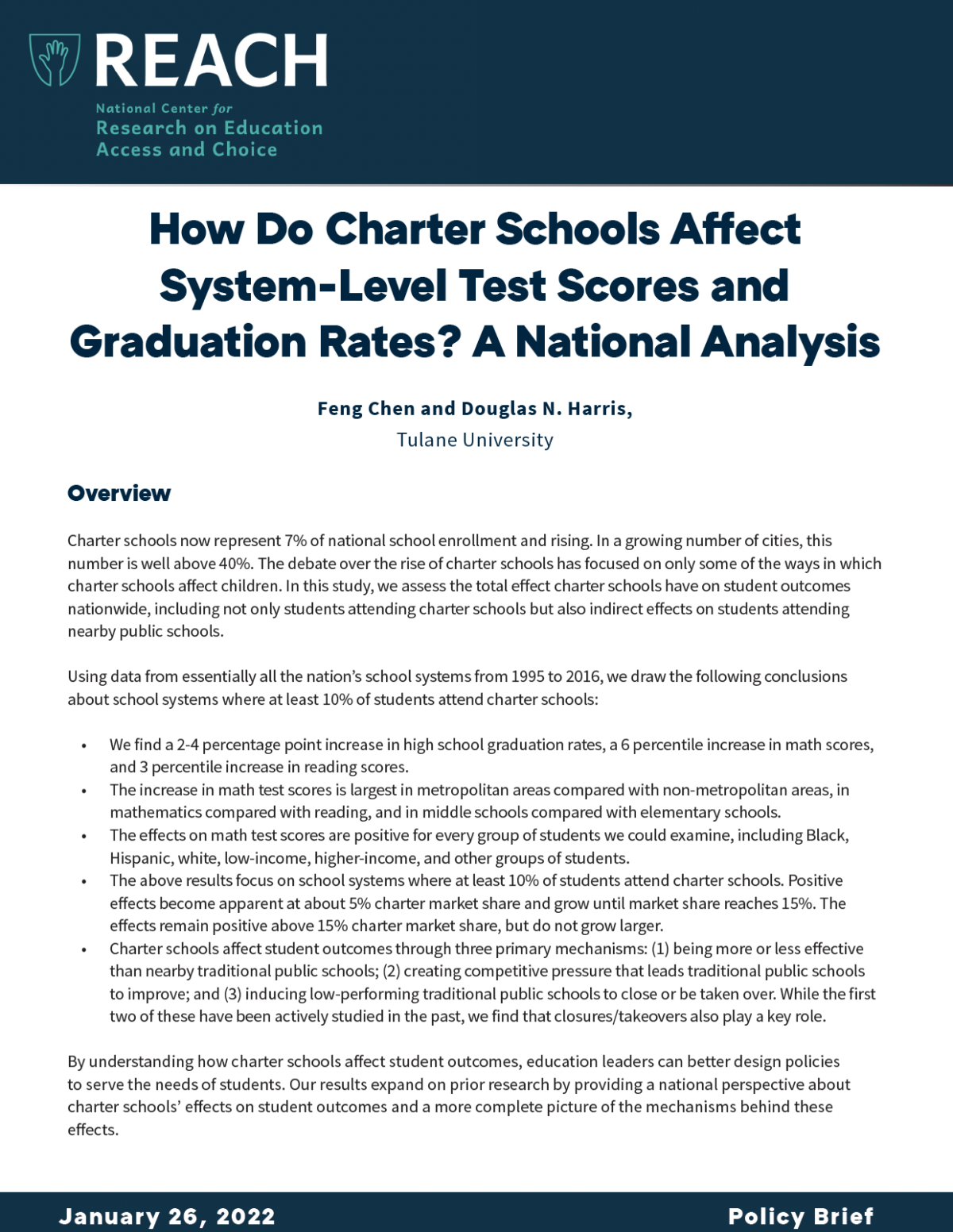The decision to close or restructure a school is one of the most contentious and wrenching that education leaders ever make. Closures force teachers to find new jobs, require students to move to new schools, and consequently upend friendships and social networks. They also affect communities, as schools serve as anchors of social engagement. These “extreme measures” clearly have a significant effect on those involved, though they may occur anyway because of budget deficits, old buildings, declining enrollment, persistent low performance, and/or other factors.
Restructuring differs from closure because schools remain open, but with different educators or governance, which makes this type of change less extreme for students and communities. Restructuring can also be a result of low performance, but other factors may also be involved.
In this study, we ask: What are the annual closure and restructuring rates of all schools across the United States, and how have these rates changed over time? Also, what factors predict closure and restructuring? We draw the following conclusions:
- The average annual closure rates of charter, private, and traditional public schools (TPS) between 2014 and 2018 were 5.4%, 2.9%, and 1.1%, respectively. The restructure rate of charter schools was about 1.6% annually and 0.5% for TPS. The closure rate for charter schools that we report is somewhat higher than prior reports, and we discuss potential reasons for this.
- Closure rates have been relatively steady in the charter and TPS sectors over the past two decades, but closure rates have been declining over the past several years in all sectors.
- Student enrollment is the most consistent predictor of school closure/restructuring across sectors. This is especially true in private schools.
- In elementary/middle TPS and charter schools, student test scores predict closure/restructuring nearly as strongly, or more strongly, than enrollment. Schools with high achievement levels and/or high achievement growth are less likely to experience closure/restructuring.
- While enrollment and achievement are the strongest predictors of closure/restructuring, the percent of students of color also predicts closure/restructuring. This is most apparent in charter and private schools.
Our results suggest that closures and restructurings are driven mainly by financial and academic considerations. On the other hand, we discuss ways in which the forces behind failing schools’ performances may be difficult to uncover with this and other types of quantitative analysis. The fact that achievement levels strongly predict closure and restructuring, for example, raises the question, why is achievement lower in schools with more students of color and higher poverty rates? While not the focus of analysis, we discuss the complex processes underlying these quantitative relationships.



